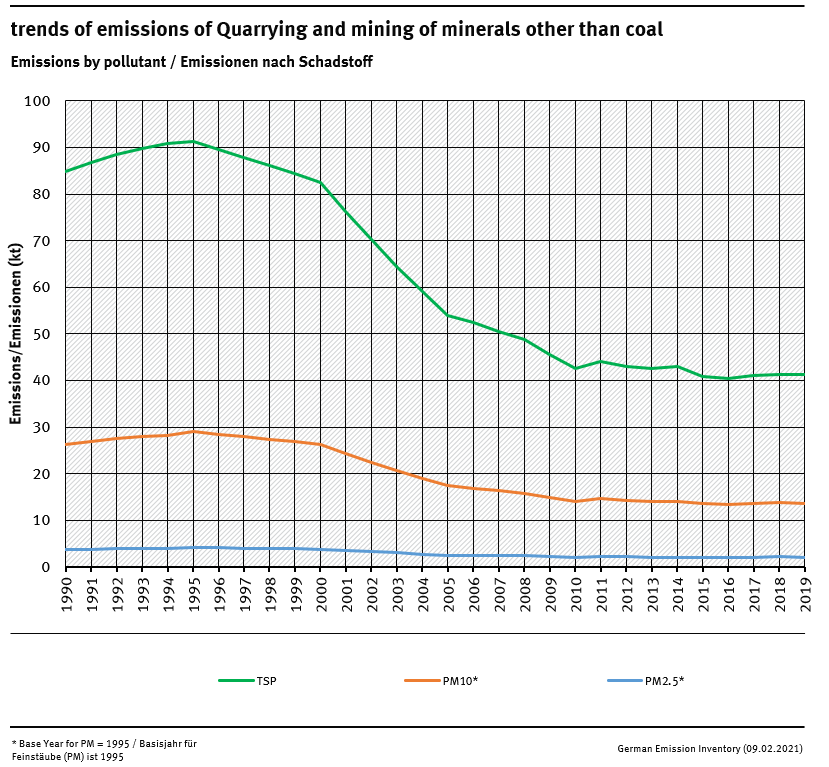meta data for this page
This is an old revision of the document!
2.A.5.a - Quarrying & Mining - Other Than Coal
Short description
| Method | AD | EF | Key Category |
|---|---|---|---|
| T1 | NS | D | L&T: TSP, PM₁₀ / L: PM₂.₅ |
The mining process emits relevant amounts of particles. Quarrying and mining of minerals other than coal is subsumed, in particular mining of limestone, hard rock and building sands. Information about the current relevance is shown in 2.A - Mineral Industry.
Methodology
With the use of the 2019 GB method 1), a Tier 2 method is available that can reflect different national conditions.
Since the GB tool in principle calculates emissions for exactly one year 2), files must be available for exactly those years in which input data are available. Intermediate years are interpolated in case of data gaps.
With the help of the GB tools, IEFs are reported on an annual basis, which are used for the inventory method AR x EF. Thus the activity data are presented transparently and can be discussed with data suppliers. The emission factors can be modified if further information on the parameters of the GB-tool is available.
Trend discussion
Recalculations
Recalculations were necessary due to revised AD and EF. Both the filled up AD and the moduled EF over time have resulted in higher emissions.
For pollutant-specific information on recalculated emission estimates for Base Year and 2018, please see the pollutant specific recalculation tables following chapter 8.1 - Recalculations.
Planned improvements
At the moment, no category-specific improvements are planned.
Short description - Salt Production
Salt production is a sub-category of the mining activities in respect of the country specific approach used. Currently, a Tier 1 method is used: information on production of salts are multiplied with emission factors for TSP and PM.
Method
Activity data
The data from national statistics includes production of potash and rock salt. Potash salt is dominating, nevertheless gaps of statistics are filled and emissions are modelled as potash salt only.
Emission factors
The emission factors are based on analogy to bulk product handling by an expert judgements from UBA:
Table 2: Overview of applied emission factors, in kg/t salt
| Pollutant | EF value | EF trend | |||
|---|---|---|---|---|---|
| TSP | 0.031 | constant | |||
| PM₁₀ | 0.016 | constant | |||
| PM₂.₅ | 0.003 | constant |
Recalculations
With activity data and emission factors remaining unrevised, no recalculations have been carried out compared to last year's submission.
Planned improvements
At the moment, no category-specific improvements are planned.


